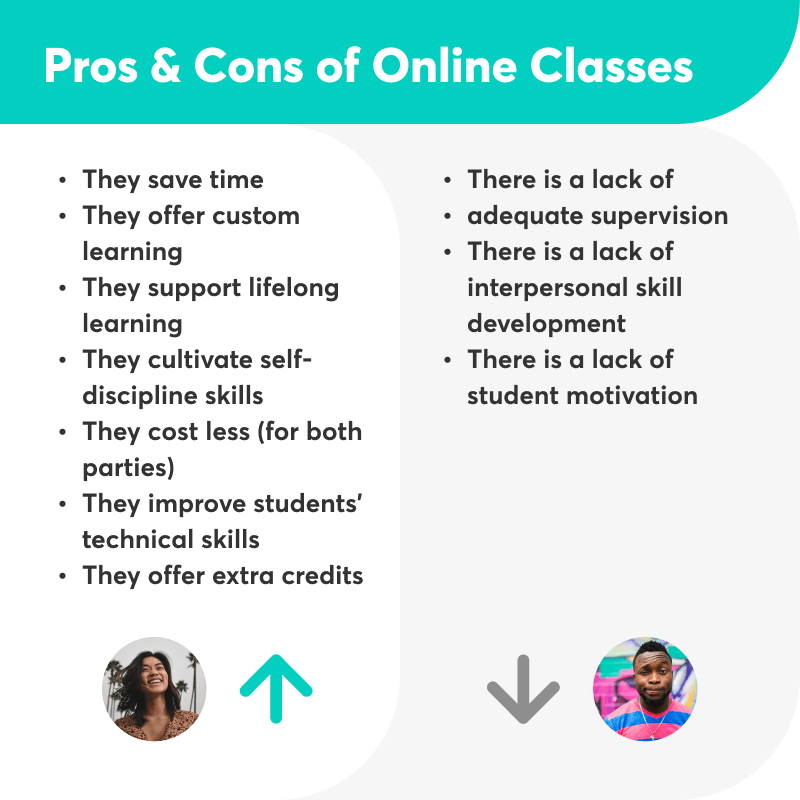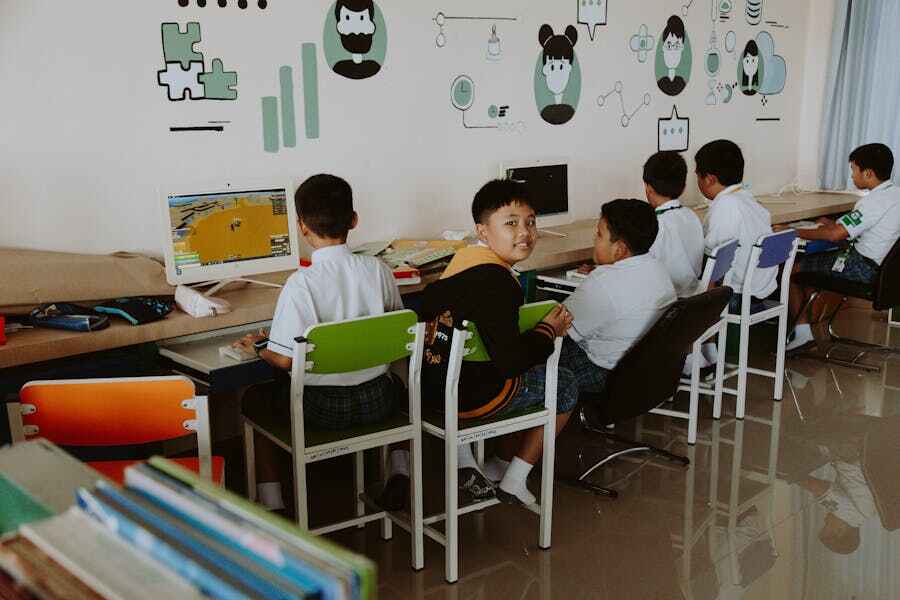Traditional education provides direct social interaction and hands-on experience. Online education often lacks these critical real-time elements.
The debate between traditional and online education continues to be a hot topic in academic circles and among students globally. Traditional education has stood as the time-honored template for imparting knowledge. It’s where face-to-face instruction and immediate feedback mesh with the tangible atmosphere of educational institutions.
The classroom setting fosters essential skills such as communication, teamwork, and discipline, which online platforms struggle to replicate. Such an environment also ensures structured learning, with set schedules that promote a sense of routine and commitment — factors often cited as crucial for deep and enduring educational experiences. As society increasingly embraces digital solutions, the innate advantages of traditional education systems remind us of the value of personal interaction and the disciplined framework they provide.

Credit: www.learnworlds.com
The Essence Of Traditional Learning
Traditional education offers unique advantages over online learning methods. Engaging face-to-face interaction, immediate feedback and collaborative group work are hallmarks of this time-honored model. Students often gain profound life experiences, fostering crucial social and emotional skills that are difficult to replicate in digital classrooms.
Traditional learning holds prime importance in a student’s educational journey. Offering unique aspects, traditional learning boosts intellectual growth and personality development.
In-Person Interaction Boosts Engagement
Face-to-face interactions are a key element of traditional education. Speaking, listening, and body language are all parts of this. It helps to form
strong bonds among students and teachersstructured environment is another benefit of traditional education. This ensures students maintain a regular routine and discipline.
| Features | Benefits |
|---|---|
| Set Timetable | Encourage time management skills |
| Structured Curriculum | Comprehensive coverage of subjects |
| Fixed Assessment Dates | Prompt regular revision of course materials |
Thus, through
in-person interactionsstructured learning environment
Leveraging Social Dynamics
Under the sweeping notion of ‘Leveraging Social Dynamics’, traditional educational settings triumph. They provide an environment conducive for imperative social interactions. These encounters foster soft skills and create networking opportunities.
Developing Soft Skills
Interaction in traditional classrooms boosts soft skills. Skills such as communication, teamwork, and problem-solving thrive in these live settings. They play a significant part in a student’s development.
The following table highlights a few essential soft skills developed in traditional classrooms.
| Soft Skills | How Traditional Classrooms Foster Them? |
|---|---|
| Communication | Regular conversation with peers and teachers enhances verbal communication skills. |
| Team Work | Group tasks and projects promote a cooperative working atmosphere. |
| Problem-solving | Face-to-face discussions and debates stimulate critical thinking and problem-solving abilities. |
Networking Opportunities Within Classrooms
Traditional classrooms offer numerous networking opportunities. These interactions aid future career growth and prospects. They offer more than just an educational acquaintance. Face-to-face extensive interactions with classmates and teachers help students form vast networks. These networks can span across different schools, cities, and even countries.
Below are some of networking opportunities offered by traditional classrooms:
- Interacting with teachers and classmates in person
- Joining school clubs and organizations
- Participating in events and competitions
These interactions help students broaden their perspectives and gain valuable insights. They also strengthen relationships with peers and educators. All these elements combine to make traditional education a preferred choice for students seeking to leverage social dynamics.
Tangible Resources And Facilities
Tangible Resources and Facilities play a pivotal role in traditional educational settings. Unlike online education, brick-and-mortar schools offer indispensable physical assets. These enhance learning experiences in ways virtual platforms can’t replicate. Let’s delve into the key resources available on-site at educational institutions.
Access To Libraries And Laboratories
Libraries serve as knowledge havens with vast collections of books, journals, and periodicals. Students gain hands-on access to reading materials that can ignite intellectual curiosity and supplement learning. Furthermore, laboratories offer a realm of practical experimentation. Learners engage with scientific equipment, conducting experiments that transform theory into tangible reality.
Below is a quick comparison of resources available in traditional institutions versus online platforms:
| Resource | Traditional Education | Online Education |
|---|---|---|
| Books | Physical access | Digital versions |
| Journal Subscriptions | In-library reading | Limited access |
| Lab Equipment | Direct use | Virtual simulations |
Physical Materials And Equipment
In traditional classrooms, physical materials and equipment form the backbone of hands-on learning. Students use lab kits, manipulate physical models, and partake in tactile activities. These experiences are crucial for fields that demand practical skills, such as engineering, medicine, and fine arts.
- Art students work with canvases, brushes, and paints.
- Medical students practice on mannequins and diagnostic machines.
- Engineering students access machining tools and raw materials.
Each of these tangible interactions contributes to a deeper understanding of subject matters. They also instill vital practical abilities, fostering both competence and confidence in students.
Immersive Learning Experience
Traditional education offers an immersive learning experience that is hard to replicate online. Rich interactions with instructors and peers create a vibrant education atmosphere. Being physically present in a classroom boosts focus and encourages deep learning. Let’s delve into the aspects that enhance this learning.
Real-world Application Through Practicums
Traditional education excels in providing hands-on experience. Students in traditional settings engage in practicums that allow them to apply their knowledge in real-world scenarios. This equips them with valuable practical skills and workplace readiness. Here are some of the key benefits:
- Direct mentorship from professionals in the field
- Experience with real-world tools and technology
- Opportunity to collaborate on projects with real stakes
- Development of problem-solving skills in a controlled environment
Cultural Integration Through Campus Life
One of the hallmarks of a traditional educational environment is campus life. It’s an arena for cultural exchange and integration. Students from different backgrounds come together, share experiences, and learn from each other. This environment fosters inclusivity and respect. Consider these aspects of campus life:
- Diverse social activities that promote interaction
- Organizational memberships, leading to leadership experience
- Community events that encourage cultural understanding
- Networking opportunities with peers and industry professionals
These elements help in developing a well-rounded individual with a broad perspective on life and cultures.
Accountability And Discipline
Accountability and discipline form the cornerstone of traditional education. Unlike online learning, these aspects are more effectively enforced in a physical classroom.
Scheduled Classes Promote Consistency
Regular, scheduled classes compel students to adhere to a routine. It promotes punctuality, planning, and a sense of responsibility. Let’s break down these benefits:
- Punctuality: Fixed class timings help develop time management skills.
- Planning: Daily classes encourage students to plan their studies and ensure timely completion.
- Sense of Responsibility: Absence will be noticed. Hence, students are encouraged to attend every class.
Direct Oversight From Educators
Direct oversight from teachers is a unique advantage of traditional education. Teachers can monitor student behaviors, offer immediate feedback, and guide them effectively.
| Benefits | Description |
|---|---|
| Behavior Monitoring: | Teachers can address disciplinary issues in real-time. |
| Immediate Feedback: | Students get instant responses on their queries and performance. |
| Guidance: | Teachers can gauge student understanding and guide them accordingly. |
In conclusion, traditional education excels in instilling accountability and discipline in students, through regular schedule and direct teacher oversight. This results in more effective learning.
Challenges And Limitations Of Online Education
While online education offers flexibility and convenience, it also presents its own set of unique challenges and limitations.
Issues With Self-directed Learning
Online learning requires a high level of self-discipline and motivation. Without a structured classroom environment, some students may struggle to stay focused and motivated.
Key issues include:
- Procrastination: Without strict class schedules, students may put off their studies.
- Lack of feedback: Immediate feedback is often lacking in online courses.
- Isolation: The absence of social interaction can lead to a feeling of isolation.
Technical Barriers And Limitations
Access to reliable technology is essential for online learning. But not all students have access to the necessary tools.
Examples of tech barriers:
- Internet Connection: Stable and fast connection is important.
- Device: Students need a device that supports the platform.
- Technical Skills: Basic tech skills are also a must.
These challenges can make traditional brick and mortar schools a more reliable choice. It’s important to note that while these challenges exist, they don’t make online learning impossible. With the right support and resources, students can overcome these hurdles and reap the benefits of a flexible online education.
Frequently Asked Questions Of Why Is Traditional Education Better Than Online
Why Is Traditional Learning Better Than Online Learning?
Traditional learning fosters direct interaction, real-time feedback, and hands-on experiences. It encourages collaborative learning and builds social skills in structured environments.
What Are The Benefits Of Traditional Schooling?
Traditional schooling offers structured learning environments, social interaction opportunities, and direct teacher support for students’ educational growth.
Why In Person School Is Better Than Online?
In-person schooling boosts students’ social skills through interactive learning. It offers immediate feedback, aids concentration, and helps develop character. Moreover, it limits the potential for technology-based distractions.
Why Classroom Learning Is Better Than Online?
Classroom learning fosters face-to-face interaction with peers and instructors, enhancing engagement and collaborative skills. It offers structured learning environments and immediate feedback, benefiting students’ discipline and comprehension.
Conclusion
Traditional education has consistently proven to hold its own value, despite the rise of online learning. Not only does it foster direct interaction, but also bolsters social skills, discipline, and collective learning. These attributes remain unchallenged by online learning platforms. Simply put, the benefits of traditional education extend beyond textbooks, preparing individuals for the complex workings of the real world.












































Leave a Reply